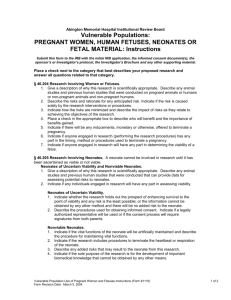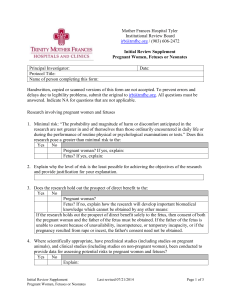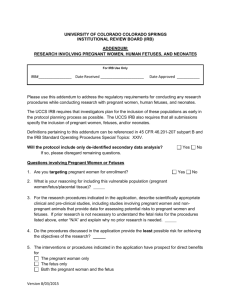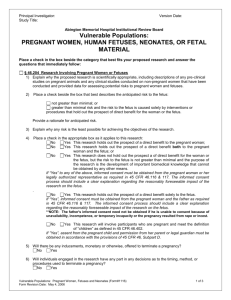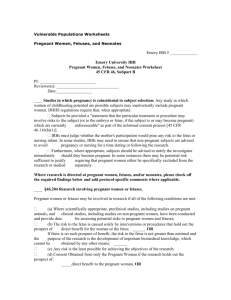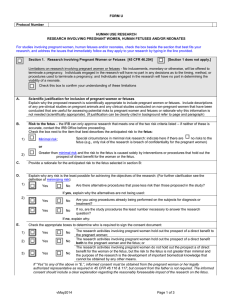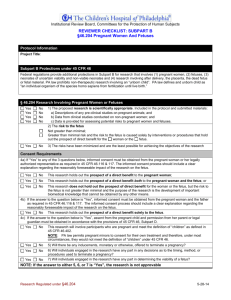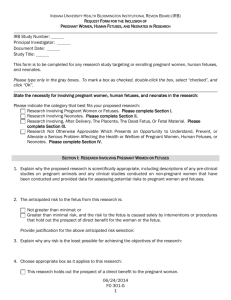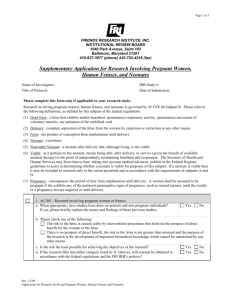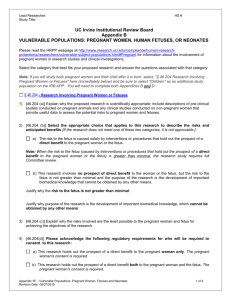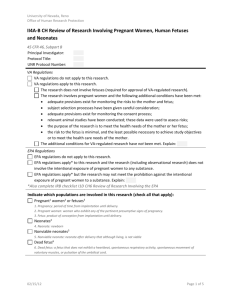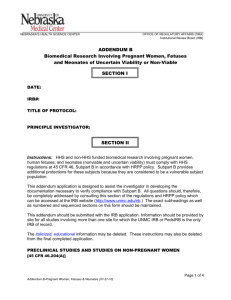FORM – Initial Review
advertisement
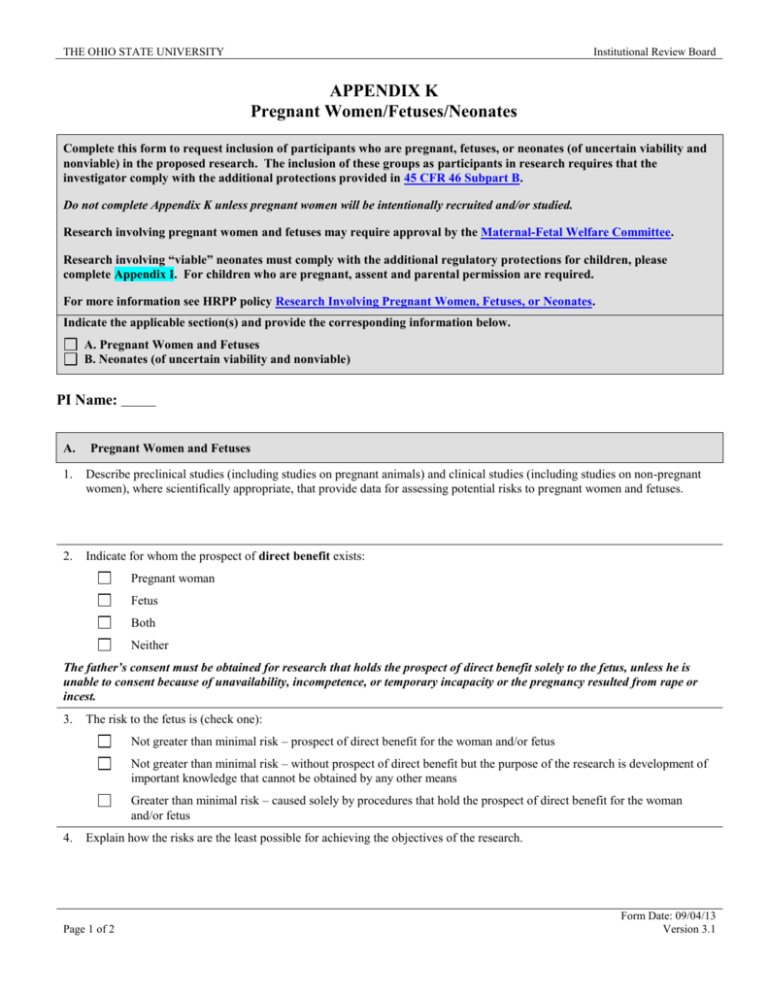
THE OHIO STATE UNIVERSITY Institutional Review Board APPENDIX K Pregnant Women/Fetuses/Neonates Complete this form to request inclusion of participants who are pregnant, fetuses, or neonates (of uncertain viability and nonviable) in the proposed research. The inclusion of these groups as participants in research requires that the investigator comply with the additional protections provided in 45 CFR 46 Subpart B. Do not complete Appendix K unless pregnant women will be intentionally recruited and/or studied. Research involving pregnant women and fetuses may require approval by the Maternal-Fetal Welfare Committee. Research involving “viable” neonates must comply with the additional regulatory protections for children, please complete Appendix I. For children who are pregnant, assent and parental permission are required. For more information see HRPP policy Research Involving Pregnant Women, Fetuses, or Neonates. Indicate the applicable section(s) and provide the corresponding information below. A. Pregnant Women and Fetuses B. Neonates (of uncertain viability and nonviable) PI Name: A. Pregnant Women and Fetuses 1. Describe preclinical studies (including studies on pregnant animals) and clinical studies (including studies on non-pregnant women), where scientifically appropriate, that provide data for assessing potential risks to pregnant women and fetuses. 2. Indicate for whom the prospect of direct benefit exists: Pregnant woman Fetus Both Neither The father’s consent must be obtained for research that holds the prospect of direct benefit solely to the fetus, unless he is unable to consent because of unavailability, incompetence, or temporary incapacity or the pregnancy resulted from rape or incest. 3. The risk to the fetus is (check one): Not greater than minimal risk – prospect of direct benefit for the woman and/or fetus Not greater than minimal risk – without prospect of direct benefit but the purpose of the research is development of important knowledge that cannot be obtained by any other means Greater than minimal risk – caused solely by procedures that hold the prospect of direct benefit for the woman and/or fetus 4. Explain how the risks are the least possible for achieving the objectives of the research. Page 1 of 2 Form Date: 09/04/13 Version 3.1 Appendix K – PREGNANT WOMEN/FETUSES/NEONATES B. Neonates - Only neonates of uncertain viability and nonviable neonates 1. State who (other than investigators and key personnel) will determine the viability of a neonate and what procedures will be used to determine viability. 2. Describe preclinical studies and clinical studies, where scientifically appropriate, that provide data for assessing potential risks to neonates. 3. The viability of neonates to be involved in the research is: Uncertain Viability Nonviable Both 4. For neonates of uncertain viability, the risk to the neonate is (check one): The least possible and the research holds the prospect of enhancing the probability of survival to the point of viability No added risk will result from the research and the purpose of the research is development of important knowledge that cannot be obtained by other means N/A The consent of either parent or either parent’s legally authorized representative (if neither parent is able to consent because of unavailability, incompetence, or temporary incapacity) is required, except that the consent of the father (or his legally authorized representative) need not be obtained if the pregnancy resulted from rape or incest. 5. For neonates of uncertain viability, explain how the research meets one of the two conditions above. N/A 6. For nonviable neonates, explain how each of the following conditions for inclusion are met: N/A a. There will be no added risk to the neonate resulting from the research. b. The purpose of the research is the development of important knowledge that cannot be obtained by other means. The consent of both parents is required. The consent of a legally authorized representative of either or both of the parents of a nonviable neonate will not suffice. If either parent is unable to consent because of unavailability, incompetence, or temporary incapacity, the consent of one parent will suffice, except that the consent of the father need not be obtained if the pregnancy resulted from rape or incest. Page 2 of 2 Form Date: 09/04/13 Version 3.1
